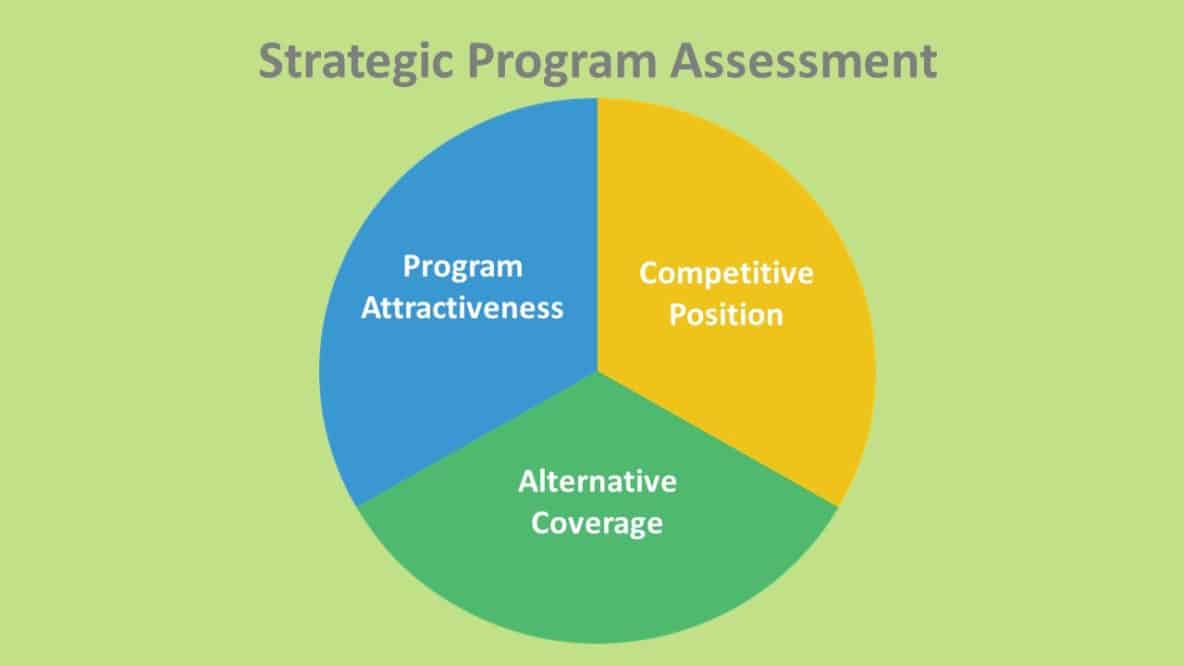Have you ever had that nagging feeling that you might not be on point with your program offerings? Maybe there is a similar program offering from others and it feels like you’re competing for dollars, or the programs and services aren’t clearly contributing to the strategic plan. Or, you’re not exactly confident that the offerings meet the needs of membership and create a strong competitive position in the marketplace?
A strategic program assessment will answer these questions, and create opportunities for effective resource allocation in the future, too. A closer look, in my experience, involves analysis in three dimensions: 1) program attractiveness, 2) competitive position, and 3) alternative coverage.
By way of general description for our very specific analysis, here are key improvement objectives within the identified areas:
- Program attractiveness: what are the factors that help us define the programs value and attractiveness? Looking at these, how do we allocate appropriate resources, now and in the future?
- Competitive position: is the organization in a position to support the program and maximize its value? What needs to happen (or not happen) to create support or exit?
- Alternative coverage: to what extent, and how, do other organizations serve the same stakeholders or benefactors with similar (for worse or for better) programs? What does this mean about our program? What needs to happen?
An in-depth strategic program assessment can take time and energy, but it’s worth it. Based on the assumption that we’re all trying to maximize our resources (time, talent and treasury), we can all agree that there are likely more opportunities to respond to member needs than we have resources, given this challenge, an organization wisely declines investment in duplication (especially when quality suffers) and focus is of the utmost importance when resources are thin.
What’s the outcome of a well-planned strategic program assessment? Not just better utilization of resources – which is critical – but the opportunity to get knowledge-based decision criteria. Alignment of programs to the strategic plan and resources can also provide an opportunity to provide cost-effective and efficient programs that are much needed and member driven.
Read Similar Blog Posts
Read more posts about Operations


